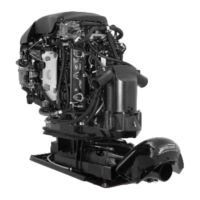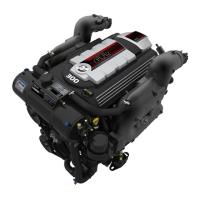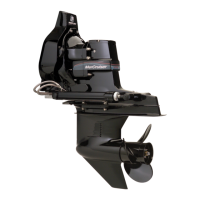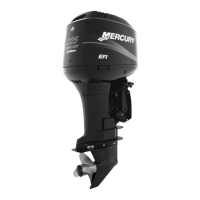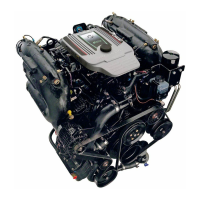22
CA7
Conditions Affecting Operation
Weight Distribution
Positioning of weight (passengers and gear) inside the boat has the following effects:
A. Shifting weight to rear (stern) will:
• Generally increases speed and engine RPM.
• At extremes, can cause boat to porpoise.
• Causes bow to bounce in choppy water.
• Increases danger of following wave splashing into boat when coming off plane.
B. Shifting weight to front (bow) will:
• Improve ease of planing on some boats.
• Improve rough water ride.
• At extremes, can cause boat to veer back and forth (bow steer).
CA8
Bottom Of Boat
To maintain maximum speed, the following conditions of the boat bottom should be observed.
A. Clean, free of barnacles and marine growth.
B. Free of distortion; nearly flat where it contacts the water.
C. Straight and smooth, fore and aft.
Marine vegetation may accumulate when boat is docked. This growth must be removed before operation; it may
clog water inlets and cause engine to overheat.
CA9
Cavitation
Cavitation occurs when water flow cannot follow the contour of a fast-moving underwater object, such as a gear
housing or propeller. Cavitation permits the propeller to speed up, but the boat speed to reduce. Cavitation can
seriously erode the surface of the gear housing or propeller. Common causes of cavitation are:
A. Weeds or other debris snagged on propeller or gear housing.
B. Bent propeller blade or damaged gear housing skew.
C. Raised burrs or sharp edges on propeller or gear housing.
CA10
Ventilation
Ventilation is caused by surface air or exhaust gases which are introduced around the propeller resulting in pro-
peller speedup and a reduction in boat speed. Excessive ventilation is annoying and usually caused by:
A. Drive unit trimmed out too far.
B. A missing propeller diffuser ring.
C. A damaged propeller or gear housing, which allows exhaust gases to escape between propeller and gear
housing.
D. Drive unit installed too high on transom.
